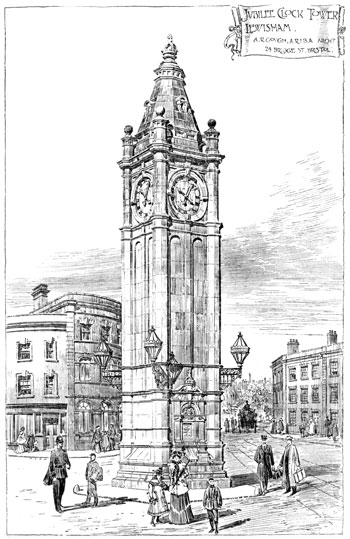History of Lewisham
The village of Lewisham consisted of little more than the High Street and its immediate offshoots from the present railway station to George Lane, plus Lewisham Road and Loampit Vale and Hill to the north. King James I, impressed with the length of the High Street, remarked �On my soul, I will be king of Lusen". The name derives from Old English �ham�, a village, and the name of a person, probably Leof or Leofsa - Leofsa�s village.
In the Middle Ages the manor of Lewisham belonged to the Abbey of Ghent. At the time of the Domesday Book (1086) there were eleven mills along the River Ravensbourne, half of them probably in Lewisham Village. Before the Industrial Revolution these mills were used for grinding steel for weapons, for tanning leather, and for other industrial purposes, as well as for grinding corn.
Like other villages at this radius from London, Lewisham became a popular place of residence for rich City men from the seventeenth century, and increasingly in the eighteenth.
The first railway through Lewisham, the North Kent line to Dartford, opened in 1849. The present station opened in 1857, when the Mid Kent line was added. These railways encouraged the building of new houses for commuters. Although there were a few working-class areas, Lewisham consisted mainly of large houses with extensive gardens until the 1870s. From this time the wealthier inhabitants moved out, and streets of houses for lower-middle class and artisan commuters had largely replaced the big houses by the end of the century.
Trams as well as trains and buses brought shoppers into Lewisham, and by 1900 there were a number of large shops in the town centre. In that year the Clock Tower was completed, to celebrate the Diamond Jubilee of Queen Victoria in 1897.
The town centre was devastated by a flying bomb in 1944, but had recovered by the late 1950s. In 1977 the shopping precinct was built, and in 1994 the High Street in the town centre was pedestrianised to create a traffic-free street market and an open space.
The Docklands Light Railway extension from the Isle of Dogs opened in 1999.
�







